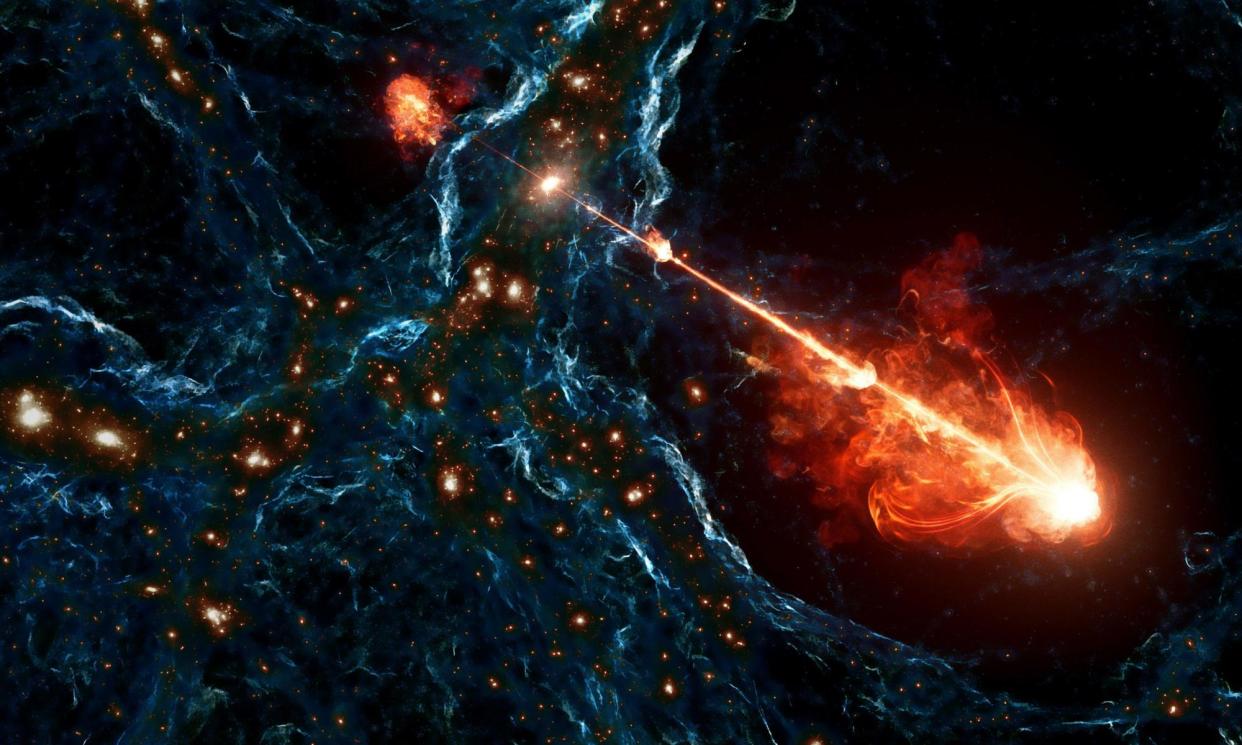Pair of huge plasma jets spotted blasting out of gigantic black hole

Astronomers have spotted two record-breaking plasma jets blasting out of a supermassive black hole and into the void beyond its host galaxy.
The enormously powerful plasma streams are the largest ever seen, measuring 23m light years from end to end, a distance that would cross 140 Milky Ways arranged side by side.
Researchers named the spectacular pair of jets Porphyrion after a giant in Greek mythology. The fierce, narrow streams emerge from the top and bottom of the supermassive black hole and have a combined power output equivalent to trillions of suns.
Black hole jets are streams of charged ions, electrons and other particles. These are accelerated to nearly the speed of light by the immense magnetic fields around black holes. Such jets have been known about for more than a century, but until recently they were thought to be rare and not so extensive.
Porphyrion was spotted by Europe’s Low-Frequency Array (Lofar) telescope during a sky survey that uncovered more than 10,000 giant black hole jets. Many are so powerful that they push far beyond the black hole’s host galaxy and deep into the vast voids of the cosmic web, the network of matter that connects galaxies.
Given the size of Porphyrion, astronomers now suspect that such giant jets have a role in shaping the evolution of the universe. Black hole jets can snuff out star formation but also spew profound amounts of material and energy deep into space.
“Porphyrion shows that small things and large things in the universe are intimately connected,” said Dr Martijn Oei, a postdoctoral scholar at Caltech in the US and lead author of a Nature paper reporting the discovery. “We are seeing a single black hole that produces a structure of a scale similar to that of cosmic filaments and voids.”
Having spotted Porphyrion, the researchers, including Martin Hardcastle, a professor of astrophysics at the University of Hertfordshire, used the Giant Metrewave radio telescope in India and the WM Keck Observatory in Hawaii to locate it within a galaxy 10 times more massive than the Milky Way and about 7.5bn light years from Earth.
The Porphyrion jets started to form when the universe was about 6.3bn years old, less than half its present age, with the jets taking a billion years to grow to their observed length, the researchers believe.
“More Porphyrion-like black hole jet systems could have existed in the past and together these could have a major impact on the cosmic web by influencing the formation of galaxies, heating up the medium in the filaments, and also they could magnetise the cosmic void,” Oei said. “This is what we want to go after now.”


